

CarExpert.com.au
The CarExpert team's favourite cars of 2025
5 Hours Ago
In a world where cost of living is out of control, taxpayer-funded bodies like ANCAP are making it unreasonably expensive to buy a new car today.

Publisher
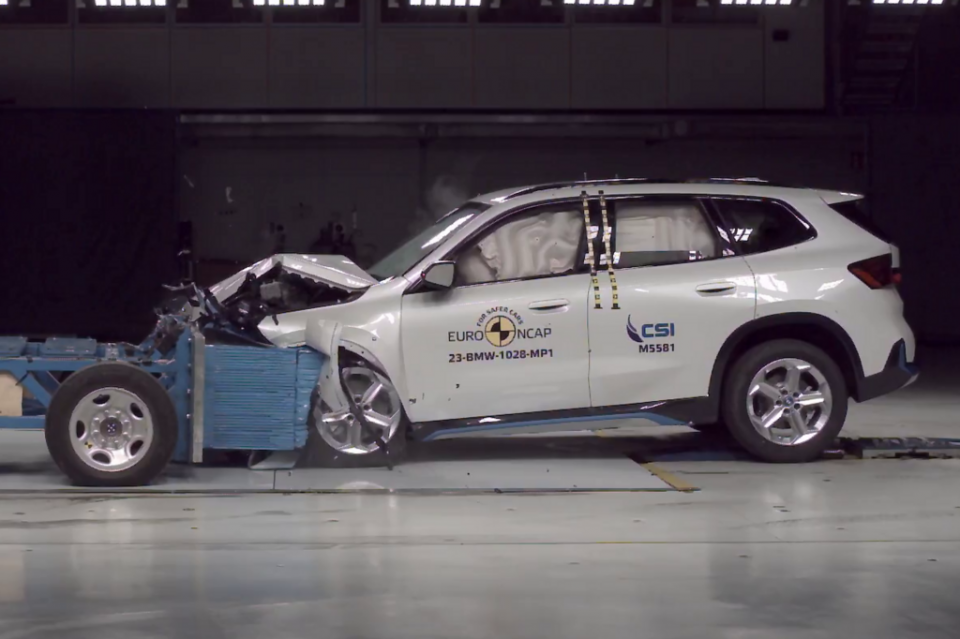

Publisher
If you have been a long time reader of CarExpert and CarAdvice prior, you may know that we have to date relied on ANCAP to provide us with a safety assessment when it comes to evaluating a vehicle’s suitability for the general public.
Going into 2024 this will no longer be a priority, as we look at safety more holistically with an eye for what actually matters to the car buying public.
Why are we doing this? Over the years the organisation has changed from being about the promotion of road safety to what it has become today; another taxpayer funded office more interested in headlines and sensationalism to continue its funding than actually informing the average Australian if their new vehicle is safe.
A great example of this is the way it conducts itself with media. Every time our staff has been invited to witness a crash test, it has always been when the primary motive was to show a poor rating.
The manufacturers are usually unaware media will be in attendance, and the media are also often unaware which car will be crash tested. And each time one of these crashes happened, the result was never good.
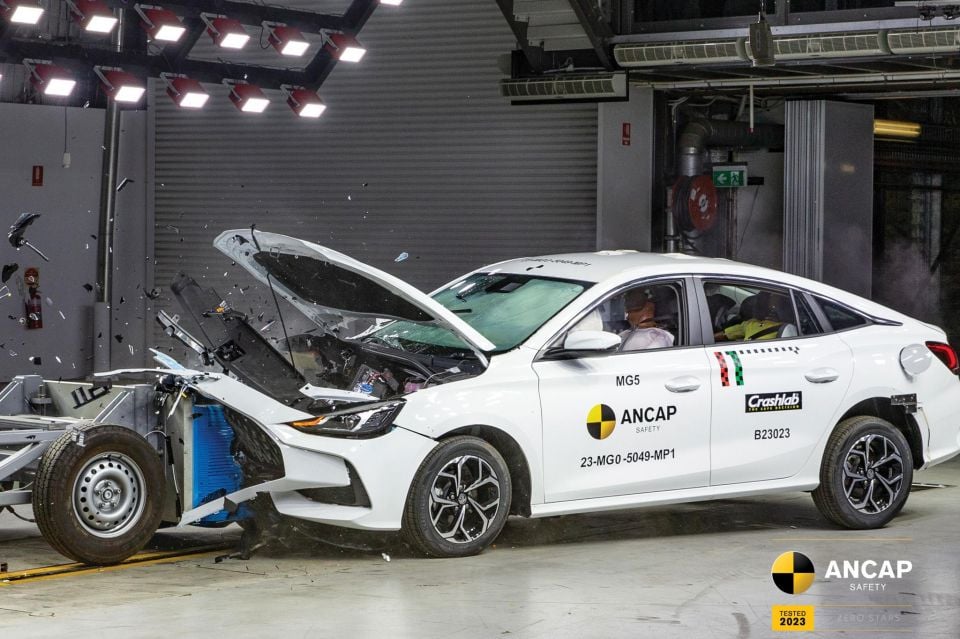
Often ANCAP already knew what the outcome would be based on international crash test results, and the car would be niche – the only way to get a shock and awe reaction from all involved.
The ANCAP system may technically have five stars, but it has become a basic yes or no system where a vehicle that receives five stars is a yes… while anything below that is basically a fail, and is lambasted for its safety credentials.
There’s also no actual testing of safety systems on public roads. A lot of the active safety systems fitted to five-star cars are appallingly bad to use in real life, but are required for maximum ratings.
This is a different approach to that of organisations like Euro NCAP (ENCAP). The majority of ANCAP’s testing data comes from ENCAP, it simply rewords its results to sensationalise the failings of cars that receive four or fewer stars.
The average Australian believes a four-star ANCAP rated car is unsafe, which is simply untrue in the majority of cases.
To give you an example of a four-star car, the Hyundai Venue received four stars despite getting 91 per cent in adult occupant protection and 81 per cent for child occupant protection. They’re the scores given to a car based on the protection offered in an actual crash – that is, the structural integrity of the vehicle.
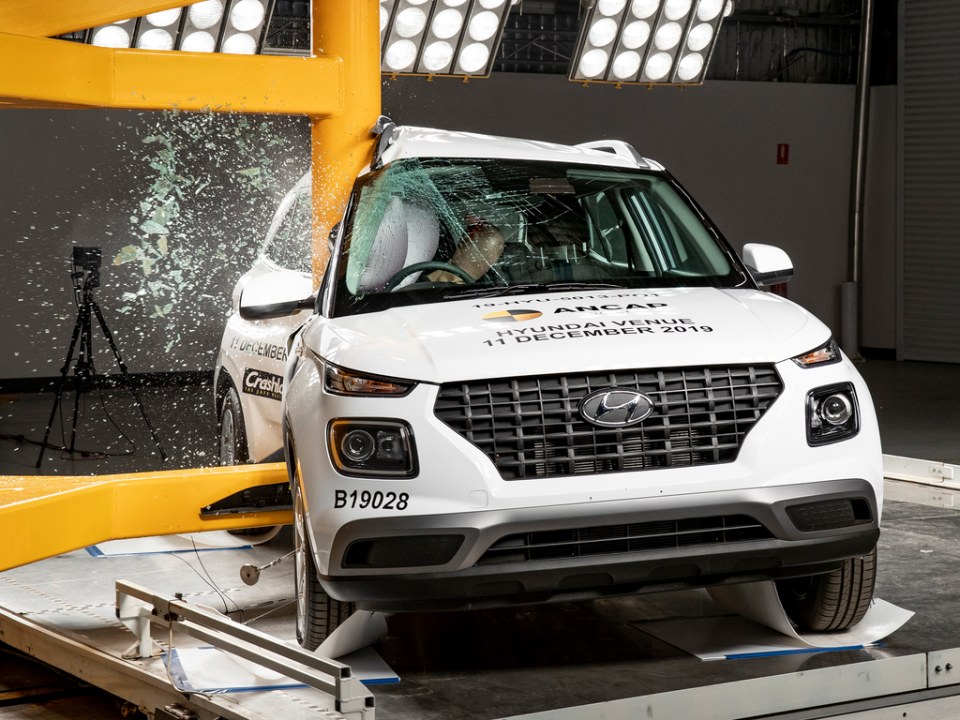
It didn’t get the maximum five star rating because it fell short of an ANCAP technicality. One of the reasons it didn’t get five stars was Australia’s lack of support for ISOFIX child seats without top-tether, which are ratified as being a far better option in Europe and North America (but ANCAP and Australian Design Rules know better, right?).
On the other hand, the Alfa Romeo Tonale got 84 per cent for adult occupant protection and 87 per cent for child occupant protection and earned five stars because it ticked the boxes for active safety. Makes sense, right?
If you explained that to an average buyer and said one car has better adult protection in an actual crash but is rated four, while the other is five despite falling short of the score for physical protection for adults, do you think they would say the system is fair?
Do you think they will understand that their four-star rated Venue is actually safer for adult protection if they actually have a crash than something potentially rated five stars?
Ignoring ANCAP for one moment, in Europe safety testing is done in a manner that manufacturers are not shamed for having a four-star car.

Frankly, a four-star car like the Venue is a much safer choice than a much older car, but ANCAP’s action in shaming carmakers for not offering every active safety system money can buy, in every car they have, stops brands bringing more affordable, safe cars to our market.
This has the opposite of the intended effect, because instead of bringing new affordable, safe cars to our market, manufacturers have fit more kit, and charge customers more to make sure they hit the five-star rating requirement – or face the media assassination that ANCAP attempts.
That means plenty of buyers will simply pick an older vehicle that suits their budget.
Some of these older vehicles wear a five-star safety rating which is now horrendously out of date, but ANCAP does little to educate buyers about the difference between a Mitsubishi ASX which was last tested in 2014 and got five stars, and the Venue which is four stars from 2019 but safer in a crash), as the requirements for a five-star rating were significantly more stringent.
If you asked the average person to tell you which car was safer based on ANCAP’s assessment, it would most certainly be the ASX. That’s why the system is broken, and why ANCAP has in many respects become irrelevant.
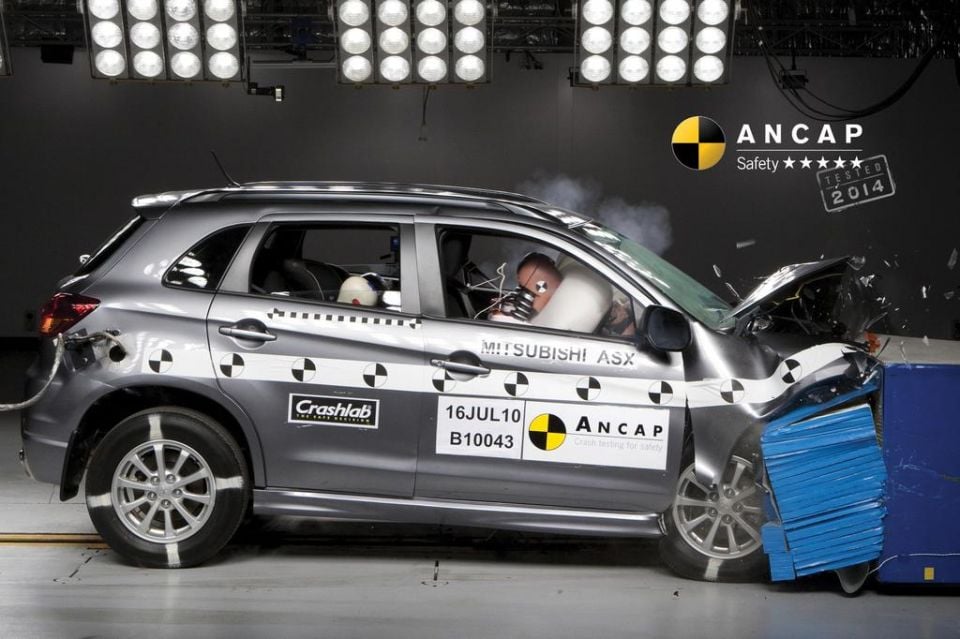
The other aspect of testing ANCAP doesn’t tell you about is how good these active safety systems it demands actually are.
So much of the technology that ANCAP has forced manufacturers to embed in modern cars, just to tick a box, are so poorly tested and implemented that most drivers are forced to turn them off each time the car starts. Tell us again how that makes cars safer?
As a clearer example of ANCAP’s failings, lets look its more recent test of the Mahindra Scorpio, which earned an incredible zero stars out of five this week.
ANCAP said of the Scorpio in its official statement this week:
“This is a stark reminder that not all cars offer the same level of safety – even when they’re brand new models.”
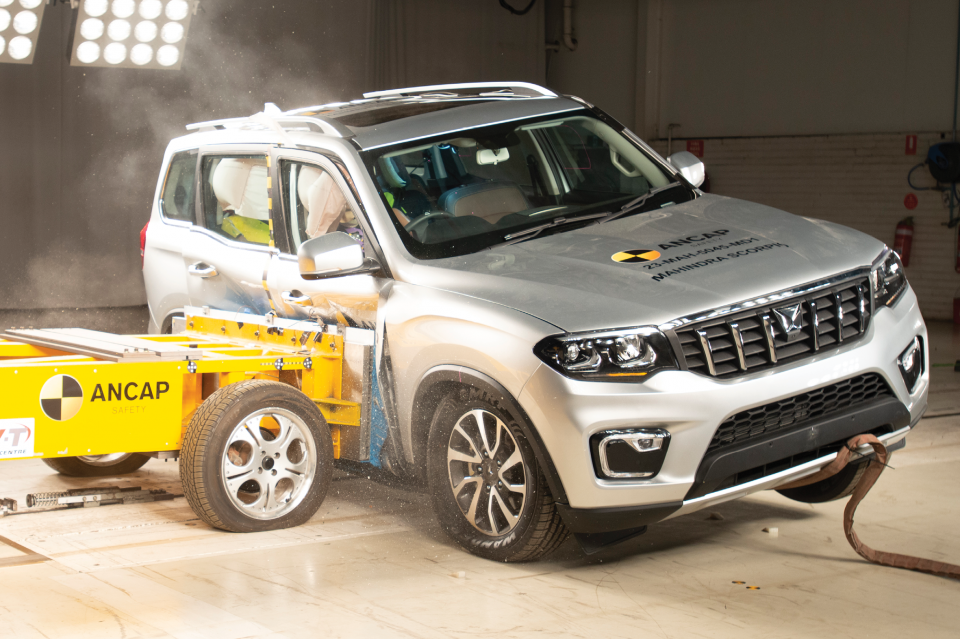
“Market competition is healthy and encouraged, however there is also a well-established expectation from Australian and New Zealand private consumers and fleet buyers that new cars entering our market offer the best levels of safety.”
Now compare this to the Global NCAP, which rated the same car as having five of a possible five stars less than a year ago. The boss of GNCAP, Alejandro Furas, said after the crash test in December 2022:
“Global NCAP congratulates Mahindra on its continuing commitment to safety, achieving five stars for adult occupant protection under our new, more demanding crash test protocols.”
Watch the Mahindra Scorpio’s crash test here and tell us if that is a vehicle that deserves zero stars.
We are talking about a car that scored 29.25 out of 34 for adult protection (86 per cent) at Global NACP, now being rated by ANCAP as basically a complete no-go. This is categorically illogical and wrong.
In fact the Scorpio is so strong it smashed right through the poorly engineered 1400kg moving crash barrier ANCAP uses, instead of the rigid fixed barrier used by Global NCAP.
The passenger cabin stayed perfectly intact, yet it was marked down because of the damage it did to the moving crash barrier – something that’s mean to simulate a 1400kg vehicle (because there’s lots of 1400kg vehicles on sale in the top 10 in Australia).
Yes, Mahindra was penalised for its structure not protecting the object it hit… despite keeping the occupant cabin intact.
In fact eight points – or 20 per cent of its adult occupant score – was deducted because of how much damage it did to the moving barrier. Further points were deducted for things like the seatbelt being too strong for rear seat occupants.
Yet ironically, it achieved an 80 per cent rating for child occupants who sit in the second row.
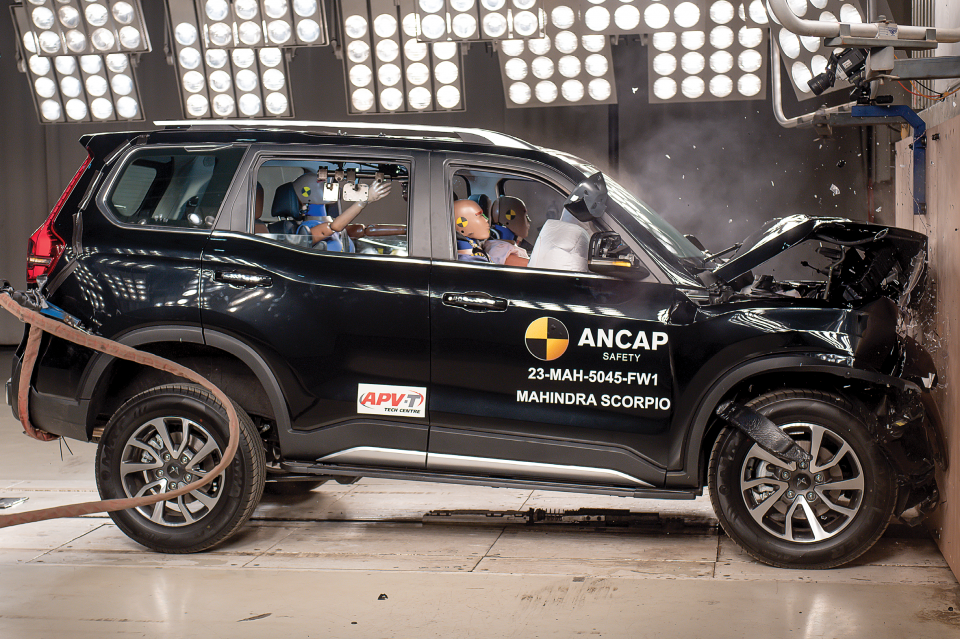
The only reason ANCAP uses a 1400kg barrier is because it shamelessly aligns itself with European crash body Euro NCAP, where smaller cars similar in size to this barrier are more common.
This is what happens when an organisation is desperate to justify its existence, sensationalising crash results without context. Furthermore, ANCAP brought journalists to this test (including CarExpert, we aren’t expecting to attend any more), where it has all but set up a manufacturer to fail, and wants media coverage to soak up the publicity about why it exists and how it’s keeping Australians safe.
Even without crashing a single car, ANCAP knew the Scorpio would get zero stars (because as per the 2023 crash test rule changes a vehicle without any of the required safety aids scores zero stars).
But for some bizarre reason, it felt the need to waste taxpayer money by buying a number of these vehicles anonymously and flying journalists to Sydney to witness a car that only ever had the chance to be zero stars crashed.
By giving safe cars like the Scorpio a zero star rating, all ANCAP does is make it harder for the average Australian to attain an actual safe car, rather than one which the organisation deems has ticked all of its boxes.

This will apply to cars like the MG 5 and the upcoming new MG 3, which will will undoubtedly be safe in a crash, but won’t pander to ANCAP’s box-ticking exercise.
The Mahindra Scorpio is the perfect example of a vehicle that brings affordable safety to the masses, but doesn’t jump through all the hoops required.
Don’t get us wrong – it can do with autonomous emergency braking and some other tech (and it’s getting those) – but does it deserve a zero? Absolutely not. Where it matters, in the actual ‘crashing’, the Scorpio is very safe.
Nowhere in ANCAP’s zero out of five rating is that put into context.
If you want to know which car we would rather be in come an actual crash, we would pick a Scorpio over a tiny light car like the Kia Picanto which ANCAP awarded four stars in 2017 or a Suzuki Swift, which got a five-star rating that same year. You should too.
ANCAP’s attitude of five or nothing has devalued the organisation of any relevance when it comes to the average Australian.
If you are buying a new car, don’t be fooled by simply looking at a star system on offer. This attempt to simplify safety has lost touch with reality.
MORE: Why ANCAP weaponising the road toll was the last straw for me MORE: Why ANCAP has run off the road MORE: ANCAP accuses CarExpert of being anti-safety
Alborz Fallah is a CarExpert co-founder and industry leader shaping digital automotive media with a unique mix of tech and car expertise.


CarExpert.com.au
5 Hours Ago


Damion Smy
19 Hours Ago


Damion Smy
22 Hours Ago


Damion Smy
1 Day Ago


Damion Smy
1 Day Ago


Damion Smy
1 Day Ago